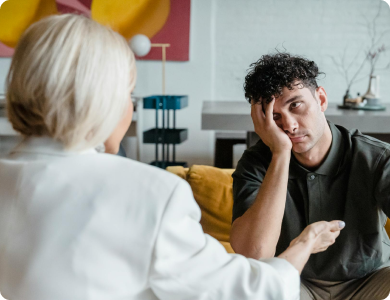Social Anxiety Disorder

A. Marked fear or anxiety about one or more social situations in which the individual is exposed to possible scrutiny by others. Example: social interactions, being observed, and performing in front of others. NOTE: In children, the anxiety must occur in peer settings and just during interactions with adults.
B. Fear that s/he will end up acting in a way or show anxiety symptoms that will be embarrassing or humiliating or will lead to rejection or offensive for others.
C. Social situations almost always provoke fear or anxiety. NOTE: in children, fear or anxiety may be expressed by crying, tantrums, freezing, clinging or failing to speak.
D. Social situations are actively avoided or endured with intense fear or anxiety.
E. Fear or anxiety is out of proportion to the actual threat posed by the social situations and to the sociocultural context.
F. Fear, anxiety or avoidance is persistent and lasts for 6 months or more.
G. Fear, anxiety or avoidance causes clinically significant distress or impairment of functioning in social, occupational and other important areas of life.
H. The symptoms should not be because of the Substance or any General medical condition
I. The symptoms should not be caused by other psychiatric illnesses.
Treatments
- Fibromyalgia
- Female Vaginismus
- Conversion Disorder
- Postpartum Depression
- Panic Disorder
- Narcissistic Personality Disorder
- Attention Deficit Hyperactivity Disorder
- Specific Phobia
- Generalized Anxiety Disorder
- BIPOLAR MOOD DISORDER – I
- Obsessive-Compulsive Disorder
- Schizophrenia
- Major Depressive Disorder
- Autism
